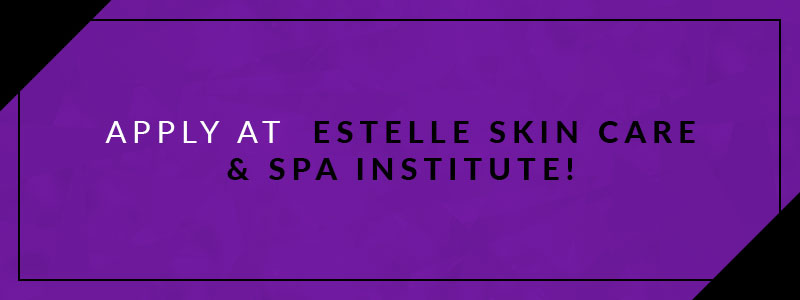
As estheticians, one of our primary duties is hair removal. Often, clients will come to us seeking advice on what hair removal is best for their targeted area and skin sensitivity. In this three-part series, we’ll discuss nine common hair removal methods, including their advantages and disadvantages. In part I, we’ll discuss surface hair removal methods, which work by cutting hair at the surface, rather than the root. In part II, we’ll discuss root hair removal methods, and in part III we’ll explore permanent hair reduction. By the end of this series, we hope that you feel more confident advising people on what hair removal method is best for their particular situation, whether you’re a certified esthetician, an esthetics student, or simply thinking about going to esthetics school.
For the best esthetics education in Chicagoland, turn to Estelle Skin Care & Spa Institute. In addition to learning about hair removal, our students also receive extensive training in facial treatments and techniques, body spa treatments, makeup, eyelash extension application, corrective esthetics, and so much more! Estelle Skin Care & Spa Institute is accredited by the National Accrediting Commission of Career Arts & Sciences (NACAAS), meaning that your education will be recognized anywhere in the United States, and federal financial assistance is available to those who qualify. To get started, schedule a campus tour today, and read on to learn more about common hair removal methods.
Surface Hair Removal Methods
Also known as depilations, surface hair removal works by cutting hair at the surface of the skin, rather than the root. While surface hair removal methods are generally less painful than root hair removal methods, they also tend to require more upkeep, as surface hair can grow back in as short as several hours.
Shaving
The most common form of hair removal, shaving involves using a razor to slice down hair, often to the level of the skin. On men, shaving is most often used to remove facial hair, while women commonly shave to remove leg and underarm hair. While shaving may cause skin aberrations and injuries, these can often be avoided by using a fresh blade, applying plenty of lubrication such as shaving cream, shaving in the direction of hair growth, and avoiding applying too much pressure.
| Shaving | |
| Pros |
|
| Cons |
|
Depilatories
Depilatory creams use chemicals to dissolve body hair at the surface of the skin. They are relatively easy to use and quick, requiring only a few minutes for application and wiping off. Depilatories are generally better for smaller areas of the body, such as armpits or the bikini line. Those with sensitive skin should be careful using this hair removal method, as it may cause allergic reactions. A patch test is recommended 24 hours in advance of using any depilatory product.
| Depilatories | |
| Pros |
|
| Cons |
|
Begin Your Career in Esthetics Today!
If you live in the Chicagoland area and are considering a career in esthetics, apply to Estelle Skin Care & Spa Institute now. Our nationally accredited esthetics school offers an extensive esthetics program that covers everything from hair removal, to facials, to makeup, and more! Reach out today for more information or to schedule a campus tour, and make sure to revisit our blog for parts II and III of this series, which will discuss root hair removal and permanent hair reduction.





